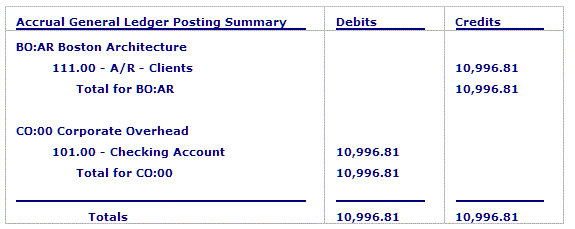Blog
Financial Statements 101: How to Read and Use Your Balance Sheet
Content
When financial statements are issued to outside parties, then also include supplementary notes. These notes include explanations of various activities, additional detail on some accounts, and other items as mandated What Is A Financial Statement? by the applicable accounting framework, such as GAAP or IFRS. The level and types of detail provided will depend on the nature of the issuing entity’s business and the types of transactions in which it engaged.
A reporting entity only includes the minimum mandated amount in the supplementary notes (which can still be quite extensive), because it can be quite time-consuming to produce the disclosures. Financial statements are a collection of summary-level reports about an organization’s financial results, financial position, and cash flows. They include the income statement, balance sheet, and statement of cash flows. Unlike the balance sheet, the income statement covers a range of time, which is a year for annual financial statements and a quarter for quarterly financial statements. The income statement provides an overview of revenues, expenses, net income, and earnings per share. Read on to learn more about income statements, balance sheets, and cash flow statements.
Statement of changes in equity
Sometimes balance sheets show assets at the top, followed by liabilities, with shareholders’ equity at the bottom. A possible concern is that they can be fraudulently manipulated, leading investors to believe that the issuing entity has produced better results than was really the case. Such manipulation can also lead a lender to issue debt to a business that cannot realistically repay it. Another concern is that financial statements are entirely historical in nature, and so can be misleading when used to project the future results of a business.
- Beyond the editorial, an annual report summarizes financial data and includes a company’s income statement, balance sheet, and cash flow statement.
- It’s the amount of money that would be left if all assets were sold and all liabilities paid.
- Reported assets, liabilities, equity, income and expenses are directly related to an organization’s financial position.
The analysis should be short with highlights rather than in-depth analysis. The financial statements themselves should be placed in your business plan’s appendices. For your business plan, you should create a pro forma balance sheet that summarizes the information in the income statement and cash flow projections. As some of its key trading partners have not yet adopted IFRS, the EU accepts the accounting standards of certain non-EU countries as equivalent with IFRS to facilitate cross-border listing. This allows foreign companies listed on EU markets to prepare their financial statements in accordance with IFRS or any other standard which has been declared equivalent to IFRS.
Three Financial Statements
The investing activities section contains cash flows from the purchase or sale of investment instruments, assets, or other businesses. The financing activities section contains cash flows related to the acquisition or paydown of debt, dividend issuances, stock sales, and so forth. The presented information is useful for determining the sources and uses of cash, and also indicates a firm’s financing situation. Financial statements are written records that convey the business activities and the financial performance of a company. Financial statements are often audited by government agencies, accountants, firms, etc. to ensure accuracy and for tax, financing, or investing purposes.

We’ll go over the basics of each financial statement, and how to read (and use) them—so your business runs like a well-oiled machine. Analysts often look to cash flow from operations as the most important measure of performance, as it’s the most transparent way to gauge the health of the underlying business. A decrease in cash flow due to a sharp increase in inventory or receivables can signal that a company is having trouble selling products or collecting money from customers. The next line in the income statement, after net income, displays the average number of common shares of the company’s stock that are held by investors. Next comes the firm’s earnings per share, which is calculated by dividing net income by the number of shares. The income statement makes public the results of a company’s business operations for a particular quarter or year.
Income Statements
By analyzing your net income and cash flows, and looking at past trends, you’ll start seeing many ways you can experiment with optimizing your financial performance. The stock price for a given company can advance or decline based on a wide variety of factors. However, companies that perform well financially by increasing their earnings, net worth and cash flow are typically rewarded with a higher stock price over time. The amount by which assets exceed liabilities is listed as total shareholders’ equity, and this represents the net worth of a company, or the book value of the stock. Shareholders’ equity includes common stock, additional paid-in capital, and retained earnings.
- A balance sheet might show you have $1,000 in accounts receivable, and your income statement shows you earned $1,000 of revenue.
- More detailed definitions can be found in accounting textbooks or from an accounting professional.
- The three major financial statement reports are the balance sheet, income statement, and statement of cash flows.
- The Government Accountability Office (GAO) is required to audit these statements.
- Here’s an example of what a balance sheet looks like if you’re a Bench customer.
- These are usually performed by independent accountants or auditing firms.
- Unlike the balance sheet, the income statement covers a range of time, which is a year for annual financial statements and a quarter for quarterly financial statements.
The more you check your books, the more likely you will report accurate information and avoid IRS audit triggers. If the IRS audits you, your statements help prove you reported accurate information. But suppose the cost of buying a new, top-of-the-line cart, one that has kevlar tank treads instead of rubber tires, is $600. You can calculate that, over the course of two years, it’ll pay for itself. Just because your products are profitable, doesn’t mean your business is profitable.
Read More
The audited financial statements, as well as the annex to the financial statements (Voluntary contributions by fund and contributor) are available below. You can make smart decisions by looking at your financial statements. For example, you can use statements to check that you price products or services effectively. How often your bookkeeper prepares a balance sheet for you will depend on your business. Some businesses get daily or monthly financial statements, some prepare financial statements quarterly, and some only get a balance sheet once a year. Income and expenses on the income statement are recorded when a company earns revenue or incurs expenses, not necessarily when cash is received or paid.

For-profit primary financial statements include the balance sheet, income statement, statement of cash flow, and statement of changes in equity. Nonprofit entities use a similar but different set of financial statements. Keep in mind that income statements, balance sheets, and cash flow statements aren’t the only types of financial statements you can use. Many create and analyze four basic financial statements, which includes the statement of retained earnings. The income statement illustrates the profitability of a company under accrual accounting rules.
The Beginner’s Guide to Reading & Understanding Financial Statements
Most small businesses track their financials only using balance sheets and income statements. But depending on how you do your financial reporting, you may need a third type of statement. https://kelleysbookkeeping.com/ A financial statement is the combination of the three major reports on a business. It will contain the cash flow statement, the income statement and the balance sheet of the business.
The cash flow statement tells you how much cash you collected and paid out over the year. This can help you predict future cash surpluses and shortages, and help you plan to have enough cash on hand to cover rent or pay the heating bill. On our balance sheet example above, the only liability is a bank loan. But total liabilities can also include credit card debt, mortgages, and accrued expenses such as utilities, taxes, or wages owed to employees. If you’re looking for a good intro to financial statements, read on.



















